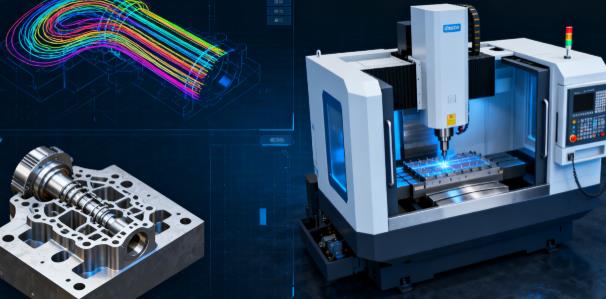In the field of CNC machining, design determines success. Proper design can significantly reduce costs, ensure accuracy, and shorten delivery times. Below are ten proven design principles to help optimize your product from the very beginning.
1. Simplify Geometric Structures
Prioritize the use of planes and standard angled surfaces. Complex curved surfaces require longer programming times and special ball-nose cutters, resulting in lower machining efficiency and error accumulation. Simplified structures can be rapidly formed using end mills, improving efficiency by over 30%.
2. Ensure Minimum Wall Thickness
Thin-walled parts are prone to vibration and deformation during machining. It is recommended that aluminum parts have a wall thickness no less than 1mm, and stainless steel parts no less than 2mm. If weight reduction is necessary, consider designing reinforcing rib structures.
3. Standardize Tool Specifications
Standardize the dimensions of holes, slots, and chamfers on parts to 2-3 commonly used specifications. This reduces the number of tool changes. Each tool change not only takes 3-5 minutes but also introduces new tool setting errors. After standardization, over one hour of machining time can be saved per day.
About Rapid Model
While you focus on optimizing design, having a reliable manufacturing partner is crucial. Rapid Model specializes in providing high-quality CNC machining, 3D printing, and rapid mold services. With our team of professional engineers and advanced equipment, we are committed to quickly and accurately transforming your designs into physical products, helping bring your products to market efficiently.
4. Control Depth-to-Width Ratio
Excessively deep holes or cavities reduce tool rigidity, leading to chip removal difficulties and increased risk of tool breakage. Please follow: hole depth should not exceed 5 times the hole diameter, and cavity depth should not exceed 3 times the cavity width. Adhering to this rule can extend tool life by over 30%.
5. Standardize Chamfers and Fillets
Standardize the chamfer or fillet sizes for all edges of the part to standard values (such as C1 or R1). This avoids frequent tool changes during machining, improving efficiency by 25%, while fillets help distribute stress and enhance part strength.
6. Design Clamping and Positioning
Consider the fixation method during machining at the design stage. Clamping tabs can be reserved in non-critical areas of the part, or existing positioning holes can be utilized. Stable clamping minimizes vibration, ensuring surface finish and dimensional accuracy.
7. Optimize Machining Datum
Strive to complete all required machining features in a single setup. Multiple setups introduce positioning errors, which may lead to misaligned holes and affect final assembly.
8. Standardize Thread Design
When machining blind hole threads, a relief groove must be reserved at the bottom, with a depth of 1-2 times the pitch. This design effectively prevents tap breakage inside the hole, avoiding costly rework and time loss.
9. Apply Tolerances Reasonably
Non-mating surfaces can use looser tolerances, allowing higher feed rates for faster machining. Each increase in precision grade may raise costs by 2-5 times. Apply strict tolerances only to critical mating surfaces.
10. Reserve Allowance for Post-Processing
If parts require electroplating or heat treatment, allowances must be reserved in the design dimensions. For example, chrome-plated parts need approximately 0.08mm allowance for the plating thickness. Without allowance, post-processing will cause dimensional deviations, making assembly impossible.
Our Services
Rapid Model provides professional CNC precision machining, rapid prototyping, and small-batch production services. We work with various metal and plastic materials, strictly control quality, and ensure every delivered part meets your design and accuracy requirements. Contact us for instant quotes and technical consultation - let us be your most reliable manufacturing partner.



